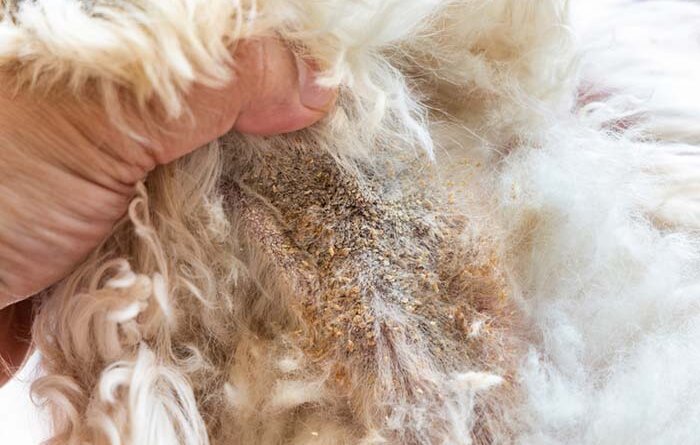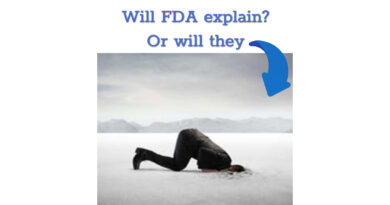Here’s 5 Things It Could Be – Top Dog Tips
[ad_1]
With different environmental and physical conditions affecting dogs at different times of the year, at different times of their lives, and even times of day, their health can suffer. Allergies, dry spells, humidity, high and low temperatures, and rain may be damaging the dog’s coat and irritating the dog’s skin. When you encounter bumps under your dog’s fur (not a lump), many things could be.
When your pooch is developing bumps on their skin, it can be caused by any of these or more.
Sometimes it may be a combination of different medical issues and situations. As the dog’s condition worsens, you must identify the possible causes so that you can reduce the problems affecting your pet.
With the increasing amount of bumps surfacing on your dog in different sizes and shapes, it may become alarming, and you may wonder if there is a more significant health issue behind them.
To be completely sure, it’s best to visit your veterinarian to check what the bump actually is because sometimes this may require a test.
Luckily, most times, these bumps under your dog’s fur are nothing too serious and typically may be caused by skin sensitivities and issues that
you can treat at home without the need to visit a vet unless the condition worsens. Here are five of the most common causes of bumps on a dog’s skin that aren’t related to tumors.
1. Canine Atopy
Canine atopy refers to allergens that dogs may be exposed to by breathing them in, also know as inhaled allergens.
These allergens can include pollen, dust, and mold. A dog may show symptoms of distress after inhalation and should be treated immediately.
Benadryl can be used to treat the reaction, but you should contact a vet beforehand to obtain the proper dosage for your dog.
Signs that your dog may be suffering from canine atopy are itching, scratching, rubbing, hair loss, greasy and flaky skin, foul odor, and excessive chewing.
Your pooch will develop bump-like welts from constant skin irritation, which you can find near the paws, groin, and armpits.
2. Fleas, Mites, and More
Fleas, mites, and other skin parasites and bugs can give dogs serious skin problems and overall health issues. Bumps may result from a bite from the critters or an allergic reaction caused by the bites on the dog’s skin.
Whether the bumps are caused by the insect bite alone or an allergy from the dog will determine the treatment method.
However, if an allergic reaction causes it, it is usually determined after the critters are treated and removed.
First, the issue should be treated as if the bumps are caused by the bites alone. Some medicines and sprays will allow you to purge your pet, home, and yard of the critters.
After the critters have been removed, you must place the dog on a preventative medication to keep the pests away.
If the reaction is determined to be an allergic reaction, topical medication can be purchased and applied at home. If the reaction does not subside, then approach the vet about treatment options.
3. Dermatitis
Dermatitis is a reaction of the skin due to the dog’s interaction with the nearby environment.
These interactions can be with grass, plants, dirt, bugs, water, and other chemicals or products used in the yard or home.
Although it is a reaction to the environment, it is not necessarily an allergic reaction.
Canine dermatitis is usually caused by a change in the environment or an addition to the environment, meaning the reaction is the dog attempting to adjust to the new change.
A common sign is developing small bumps on the skin that become irritated and change into hot spots.
The dog’s reaction will typically go away on its own unless it has progressed into hot spots.
A hotspot is a lesion on the exposed skin commonly caused by moisture, which can be rain or the dog continually licking the wound.
If a hot spot is noticed on the dog, a vet should be contacted right away. An excellent way to prevent and treat small hot spots is to use a benzoyl peroxide shampoo.
4. Skin Allergies
The realization that the dog may have a skin allergy happens for many dog owners. Bumps and rashes are visible signs of skin allergies on a dog.
Dogs that are poorly bred are more likely to develop skin allergies versus dogs that are properly bred and cared for.
Skin allergies can be hard to deal with, as the symptoms appear out of nowhere and without an apparent cause.
With intense observation and using the research of common causes, it may be possible to discover the cause and remove it from the environment.
A vet can also be contacted and diagnose the issue to prevent it in the future. You may treat minor skin itches with hydrocortisone products.
5. Food Allergies
Food allergies may seem just as challenging to identify as skin allergies.
The appearance of bumps suggests that the problem lies on the outside of the skin when there seem to be no obvious internal causes.
Food allergies show the same symptoms as other allergy types, causing slight confusion when determining their origin.
 The usual cause of food allergies is consuming food that contains a specific ingredient that the dog is allergic to.
The usual cause of food allergies is consuming food that contains a specific ingredient that the dog is allergic to.
The key to combating the allergy is identifying the ingredients included in the dog’s current diet and shopping for new food that does not include one of the ingredients.
If the dog continues to show signs of allergies, you need to try another brand of food that includes different ingredients.
Repeat the process until a brand is found that does not cause an allergic reaction within the dog.
Some dogs will randomly develop bumps on their skin due to a random occurrence. You can usually treat these bumps at home with a quick shampoo and anti-itch medication.
The best way to determine the cause of the bumps is to attempt the treatment at home before moving on to find other causes.
Most times, the bumps will disappear and no longer be a problem for you or the dog.
Other Types of Bumps Under Your Dog’s Fur and Lumps Pet Owners Should Be Aware Of
As mentioned, the above types of lumps and bumps on your dog’s body do not include tumors and are the most common explanations.
Your dog may also have lumps and bumps due to the following reasons, which are less common and do include tumors.
You can also think of the following terms as ways to describe the lumps and bumps already mentioned.
Abscess
An abscess is a pocket with pus. If it occurs under your dog’s fur, then pet parents may notice a painful swelling. When you touch that swollen area, it may feel squishy or firm.
Importantly, it would help if you took your dog to the vet to treat an abscess. Expect the vet to evaluate the abscess on your pet’s skin.
Then, he will drain it and use a sterile solution to flush the area. The vet will also typically prescribe antibiotics.
Histiocytomas
These are button-like lumps that are red. They are most common in young dogs under six years old and found on the legs.
They also typically go away by themselves. Histiocytomas are not dangerous, but they do look similar to potentially cancerous skin tumors. As such, you should always have a vet check them.
Hives
Just like their pet parents, dogs can get hives as well. They may include itchy raised bumps that are oval-shaped. Or they may be red and round, creating a rash.
Hives come from allergic reactions. The allergen in question can be anything. It may be food allergies, as mentioned above.
Or it may be an allergy to a bee sting or something else.
Mild hives are not usually life-threatening. However, your vet may still suggest a steroid or antihistamine relieve the itching.
Lipomas
These are fat-filled tumors. They don’t cause concern as they naturally occur with aging.
Your dog does not find them painful, they grow slowly, and they are unlikely to spread.
Mast Cell Tumors
Mast cell tumors (MCTs) are not just a type of skin cancer. They are the most common skin cancer that affects dogs.
The most commonly affect Boston terriers, Labrador retrievers, schnauzers, beagles, and boxers. They are also more common in older dogs who are at least eight years old.
A mast cell tumor can vary greatly in appearance, so have your vet check any skin lumps in your older dog. Be extra careful if your canine is one of the breeds with a higher risk.
Melanomas
Melanomas occur in dogs when melanocytes, the cells that carry pigment, grow too much.
These may be benign or malignant, so that they may be noncancerous. Your vet will perform diagnostic tests to determine treatment.
It is more common for skin melanomas to be benign tumors. Your vet can typically use surgical removal to heal your dog.
However, melanomas by the legs and mouth tend to be more aggressive. These can be cancerous tumors that require more extensive treatment.
Perianal Adenomas
These tumors occur in the anus and affect the sebaceous (or oil) glands. They are most common in unneutered male dogs.
This is another typically benign growth. It is not usually painful and typically grows slowly. However, they can develop infections or ulcerate, so keep an eye on them.
Sebaceous Cyst
A sebaceous cyst forms when an oil gland on your dog’s skin gets plugged. Think of them as harmless large pimples.
They typically go away on their own but can eventually return. These cysts are red and may cause soreness, but they are not harmful. They may burst, in which a white material will come out.
Skin Tags
A skin tag is common on older dogs, just like they are on older humans. They are just fibrous growths and are not harmful.
Large dog breeds may be more likely to develop skin tags, but any dog can.
Warts
Another type of lump or bump that dogs develop just like humans is a wart. These are called papillomas. Many pet owners notice these suddenly appear on dogs.
They are usually benign. Expect them to look similar to cauliflower in appearance and be either in clusters or alone.
Warts are most common on your dog’s lower legs, feet, footpads, between the toes, eyelids, mouth, genital area, or face.
Common Questions about a Lump or Bumps Under Your Dog’s Fur
The following information should answer any lingering questions you have about lumps and bumps on your dog.
What Is the Small Bump Under My Dog’s Skin?
Most of the time, when you find a small lump or bump, it will be a fatty tumor. These are commonly found and tend to be benign.
It should give you peace of mind that less than half of the lumps on a dog are dangerous cancers or even malignant.
Are Cancer Lumps on Dogs Hard or Soft?
Cancer lumps tend to be hard and immovable. This contrasts with the softness and feel of fat you will notice when dogs develop lipomas.
What to Do When You Find a Lump on Your Dog?
Any time you notice a lump or large pimple on your dog, you should contact your vet. They will help you evaluate if the lumps are a serious concern or something minor.
Your vet will also ask you to observe the lump before your appointment. This helps them tell if it is slow-growing or fast-growing.
Expect the vet to ask about other symptoms, whether they suspect they are dealing with benign masses or malignant tumors. They may ask about your dog’s mobility, for example.
Your vet will evaluate the bump as well as other tissues by it. They may even check if the lump affected other organs.
Then, they will suggest the ideal treatment for your pet. Many common lumps will disappear on their own. Some may need to be surgically removed.
Cancerous lumps may require radiation therapy.
Do Cancerous Lumps Hurt Dogs?
Some cancerous lumps may hurt dogs. Others may not bother them at all. Yet others may itch.
READ NEXT: 9 Ways to Improve Your Dog’s Skin and Coat Health
[ad_2]
Source link




